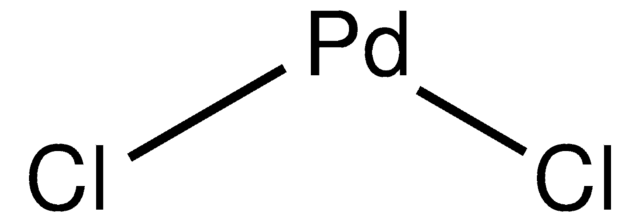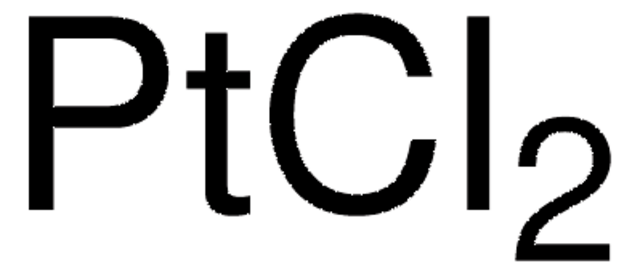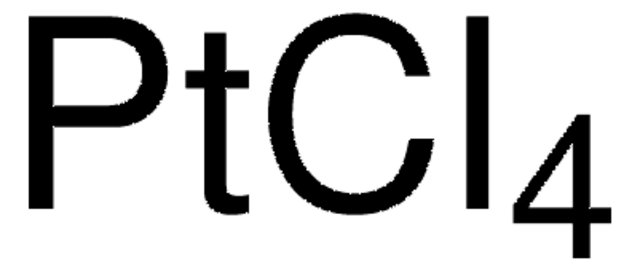204021
Ammonium hexachloroplatinate(IV)
99.995% trace metals basis
Sinônimo(s):
Ammonium platinic chloride, Platinum(IV)-ammonium chloride
About This Item
Produtos recomendados
Ensaio
99.995% trace metals basis
forma
solid
Impurezas
≤55.0 ppm Trace Metal Analysis
densidade
3.07 g/mL at 25 °C (lit.)
cadeia de caracteres SMILES
[NH4+].[NH4+].Cl[Pt--](Cl)(Cl)(Cl)(Cl)Cl
InChI
1S/6ClH.2H3N.Pt/h6*1H;2*1H3;/q;;;;;;;;+4/p-4
chave InChI
PCCGQTHFYHJATL-UHFFFAOYSA-J
Procurando produtos similares? Visita Guia de comparação de produtos
Características e benefícios
Palavra indicadora
Danger
Frases de perigo
Declarações de precaução
Classificações de perigo
Acute Tox. 3 Oral - Eye Dam. 1 - Resp. Sens. 1 - Skin Sens. 1
Código de classe de armazenamento
6.1C - Combustible acute toxic Cat.3 / toxic compounds or compounds which causing chronic effects
Classe de risco de água (WGK)
WGK 1
Ponto de fulgor (°F)
Not applicable
Ponto de fulgor (°C)
Not applicable
Equipamento de proteção individual
Eyeshields, Faceshields, Gloves, type P2 (EN 143) respirator cartridges
Escolha uma das versões mais recentes:
Já possui este produto?
Encontre a documentação dos produtos que você adquiriu recentemente na biblioteca de documentos.
Os clientes também visualizaram
Nossa equipe de cientistas tem experiência em todas as áreas de pesquisa, incluindo Life Sciences, ciência de materiais, síntese química, cromatografia, química analítica e muitas outras.
Entre em contato com a assistência técnica













